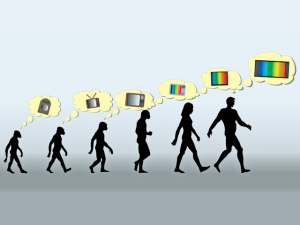Expect a Seismic Shift in Video Consumption

By Mitch Barns, CEO, Nielsen
When asked about the future recently, Comcast CEO Brian Roberts said, “Television will change more in the next five years than in the last 50.” We agree.
Based on 70 years of watching what consumers experience, and how they buy, how they act and what they do based on their consumption of content, we see a seismic shift coming in the next five years. Nowhere is this more acute than when it comes to television and video consumption.
In fact, we see five significant and interrelated trends emerging that will shape the media business in the immediate future and beyond.
First, distribution channels will continue to merge. Devices define our media diet — be it TV, computers, mobile, or/and whatever comes next. Today, while much of the video consumed is still on traditional television, those figures migrate daily. These shifts mean that “TV” as shorthand for video content doesn’t work anymore. Ultimately, the marketplace will be device-neutral, and will follow “video.”
Some frame this in a “TV is dead” metaphor. This couldn’t be further from the truth. We access more content now than ever before: The average American consumes nearly 60 hours of content each week across different screens, including computers, mobile devices and TV sets. Viewed through the content lens, “TV” is being viewed more often, for longer, and across more occasions, platforms and devices.
Second, the advertising solution will no longer be just about demographics. Increasingly, information about consumers’ behaviors and geographic location will enhance today’s method of ferreting out customers using only age and gender as a proxy. Today, most of the digital marketplace works this way, but over time, more of the media landscape will join them. As they’ve indicated, companies like Comcast and Time Warner Cable have an opportunity to push forward the addressability of video advertising. Ultimately, any brand will be able to move beyond the current proxy system to get to their precise audience on any platform.
Third, as viewers continue to move more fluidly across distribution channels, so, too, will advertising dollars. In today’s U.S. media market, those dollars total near the hundred-billion mark. As those viewers move, chief marketing officers will want to follow them in real time. For the marketplace to truly evolve into a real-time world, it will need to accurately encompass the cross-platform space so that marketers are no longer working in silos. They will need to get confirmation from a trusted independent source that their real-time dollars paid for the intended viewers, not fraudulent bot traffic or off-target audiences.
Fourth, many companies (media and otherwise) will use their own rich data to help determine who their specific consumer is. Right now, Big Data is too often a description of a problem, and not a solution. The solution will be found by marrying each company’s own data set to other, more representative information. The harnessing of this disparate data to produce simple, actionable insights will result in better decisions. Companies can use their assets — consumer relationships, ad sales relationship, and consumer insights — to build and leverage partnerships that open the door to finding their perfect consumer. Joining and unlocking this type of information is a formidable task, requiring rigorous measurement science to do it well.
Fifth, independent measurement will matter more than ever before. Globally, we see that when a market aligns around a common metric, one that is independent and trusted by all sides, the industry grows quicker and healthier. Delivering a complete and accurate view of the consumer, across all devices and distribution channels, requires the best measurement science available. While there are many planning and custom solutions out there, history shows that markets prefer to trade on a single, common, trusted measurement. That measurement requires the highest level of efficacy, confidence and transparency as it drives decisions related to millions, if not billions, of dollars of marketplace trade.
Consumer preferences over the devices and platforms used to access content will continue to change — and likely quickly. Adapting to these changes comes with growing pains, marketplace feedback and, hopefully, a bit of self-reflection to understand what needs to be reimagined. For the foreseeable future, we need to rethink the way we define TV. It needs to extend beyond a myopic view of the standard living room and big-screen experience to the myriad ways that video content is today consumed. We need proven and complete methodologies that follow representative and responsible measurement practices. Ultimately, the marketplace will demand a rigorous, independent measurement before it’s willing to trade billions of dollars.
Mitch Barns is CEO of Nielsen. Reach him @Nielsen.
Original Link: http://recode.net/2014/02/26/expect-a-seismic-shift-in-video-consumption/



